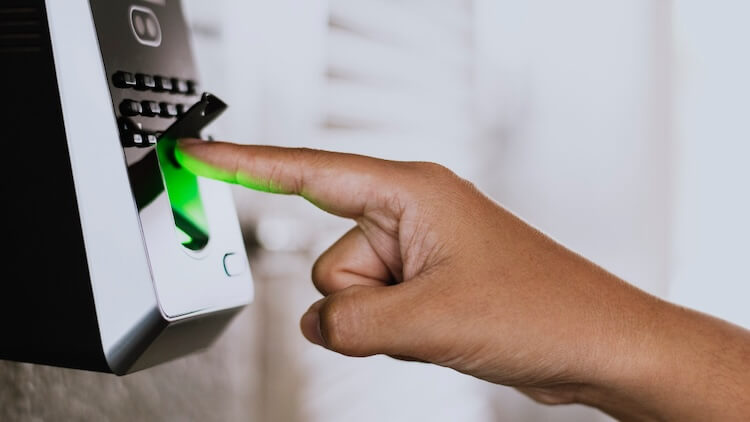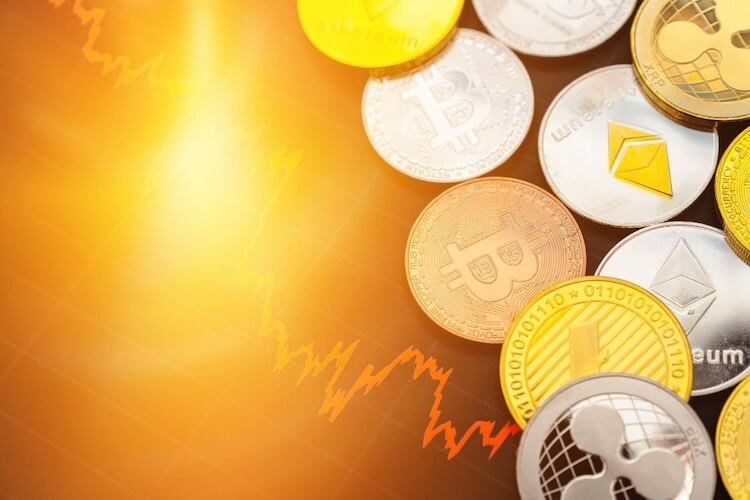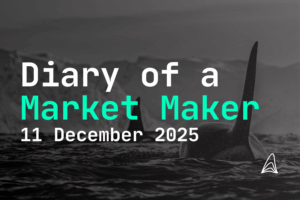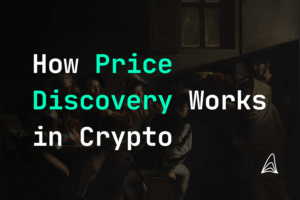
Dead Man Switch Order and How Do You Set One Up?
- Jakob Brezigar
- Last updated: 05.February 2024
- Reading time: 6 min
Imagine if you could prevent downsides of network malfunctions in crypto and crypto asset losses. Well, that’s essentially the role of a dead man switch order in the digital asset world. A dead man switch order in crypto is a safety mechanism designed to automatically cancel market maker’s orders or manage your digital assets if you’re unexpectedly unable to (if you die, become extremely ill, etc.).
In the dynamic and sometimes unpredictable world of cryptocurrency, safeguarding digital assets is a paramount concern for investors and enthusiasts alike. A dead man switch order, a concept borrowed from various safety-critical industries, has found its way into the digital asset management space as a sophisticated means to protect one’s investments. This article will provide a more informative exploration of dead man switch orders, as well as our step by step guide on how to set it up to make it easier for you.

Table of Contents
What is a dead man's switch in cryptocurrency?
A dead man’s switch in cryptocurrency is a security feature that triggers a specific action, like transferring assets or revealing information, if the user becomes inactive for a predetermined period. It’s designed to protect assets in case of unexpected events like the user’s incapacitation or death.
How dead man switch benefits crypto market makers?
Dead Man’s Switch benefits crypto market makers by providing a safeguard against network and algorithm malfunctions. It automatically cancels all active orders if a set timer expires without renewal, protecting against financial risks from unmanaged orders during connectivity issues or extreme latency. Additionally, it guards against algorithm errors by requiring periodic confirmation signals, preventing unintended trades and substantial losses due to malfunctioning algorithms, thus maintaining market integrity and stability.
How does a dead man's switch work in crypto wallets?
In crypto wallets, a dead man’s switch activates a transfer of funds to a designated beneficiary if the wallet owner fails to perform regular check-ins within a set timeframe. This ensures that the assets are not lost and can be passed on.
Key Takeaways
It’s a safety mechanism, traditionally used in heavy machinery, adapted for digital assets to prevent disasters if the operator is incapacitated.
For crypto market makers, it safeguards transactions and algorithms from network/system malfunctions and algorithm errors, canceling all orders if issues arise.
- Crypto market makers like Orcabay use dead man switches to mitigate financial risks during network malfunctions by automatically canceling active orders, ensuring market integrity.
- Personal use in crypto involves setting pre-determined actions (like transferring assets) if extended inactivity suggests the owner’s death or incapacitation.
Setting it up typically involves choosing a service, defining messages and recipients, setting a trigger mechanism, and regular maintenance and updates.
What is a Dead Man Switch in General
A dead man switch (or dead man’s handle) is a safety mechanism used to ensure that a machine or system is automatically shut down if the human operator becomes incapacitated. Traditionally found in heavy machinery, trains, and other vehicles, it requires the operator to hold down a switch or lever continuously.
If the grip is released, the machine stops operating, preventing potential disasters. This concept has been ingeniously adapted into various forms, including digital dead man’s switches, to serve a similar protective function in numerous fields, including the management of digital assets and personal data.
Dead Man Switch Order is Like Dead Man's Handle for Crypto Assets
Just as a dead man’s handle in a train ensures the safety of all passengers by bringing the train to a stop if the driver is incapacitated, a dead man switch order safeguards your crypto operations or your crypto assets. These are two distinctive ways of how the dead man’s switch is being used in the world of crypto.
First and foremost for us at Orcabay as crypto market makers we tend to utilize the safety features of the dead man’s switch for our operations in order to protect our transactions and algorithms from potential network or system malfunctions. On the other hand, dead man’s switches may be used as an emergency measure in order to be able to access the crypto assets in case of unexpected events. It’s a proactive measure to ensure that your digital wealth doesn’t become inaccessible in the event of your unexpected death or incapacitation. It’s about taking control of the uncontrollable and ensuring that your assets are managed according to your wishes, even when you’re not around to oversee them.
Digital Dead Man's Switch
A digital dead man’s switch represents a significant evolution from its mechanical counterpart, catering to the needs of an increasingly interconnected and online world. In essence, a digital dead man’s switch is a service or software that will perform certain actions if it doesn’t receive a regular sign of life from the user.

These actions can range from sending out pre-written emails, transferring cryptocurrency to a designated account to cancelling all of the future scheduled transactions in case of network difficulties. Particularly in the context of crypto assets, a digital dead man’s switch could ensure safety on multiple levels, for both the crypto market makers and liquidity providers as well as for personal users.
Dead Man's Switch as Network Malfunction Safeguard
In the volatile and fast-paced world of cryptocurrency trading, market makers are particularly vulnerable to the risks associated with network malfunctions or exchange downtimes. The Dead Man’s Switch, a critical feature offered by platforms like BitMEX, serves as an essential safeguard in these scenarios. This mechanism operates by setting a timer, which, upon expiration without renewal, triggers the automatic cancellation of all active orders across various symbols.
This functionality is crucial for market makers who place a high volume of orders based on sophisticated algorithms. Network issues, such as connectivity loss or extreme latency, can lead to significant financial risks if orders are left unmanaged. By implementing a Dead Man’s Switch, market makers can set a predefined timeout, such as 60 seconds, and routinely reset this timer at short intervals, for instance, every 15 to 30 seconds.
We at Orcabay like to keep tight control over the trading, therefore we have an interval set at every 10 seconds. This strategy ensures that in the event of a network malfunction, any potentially harmful orders are swiftly nullified, thereby protecting us from unforeseen losses and maintaining market integrity. Additionally, this tool is adaptable, allowing users to deactivate the mechanism during periods of scheduled maintenance or expected downtime, further enhancing its utility in managing the inherent risks of digital asset trading.
Dead Man's Switch as an Algorithm Malfunction Safeguard
Beyond guarding against external network failures, the Dead Man’s Switch plays a pivotal role in safeguarding crypto market makers from internal vulnerabilities, particularly algorithm malfunctions. In algorithmic trading, where decisions are made in milliseconds based on complex and dynamic criteria, the accuracy and reliability of these algorithms are paramount.
However, even the most sophisticated algorithms are not immune to glitches or unexpected errors. In such instances, a malfunctioning algorithm could continue executing trades that are no longer optimal or, worse, detrimental to the market maker’s position. The Dead Man’s Switch addresses this risk by providing an automated layer of protection. By requiring periodic confirmation signals, typically every few seconds, the system ensures continuous monitoring of the algorithm’s operational status. If the algorithm goes offline or stops sending these signals due to a malfunction, the Dead Man’s Switch is activated, promptly canceling all open orders.
This immediate response is crucial in preventing a cascade of unintended trades that could lead to substantial financial losses or market disruption. By integrating the Dead Man’s Switch into their overall trading system, market makers like us at Orcabay can add a critical safety net, ensuring that their trading strategies do not inadvertently become liabilities in the face of algorithmic errors.
How Dead Man's Switches Work in Crypto for Personal use
In the realm of cryptocurrency, a dead man switch operates by monitoring your activity or the lack thereof over a predetermined period. If the system detects an extended period of inactivity, which might suggest the owner’s death or incapacitation, it triggers a series of pre-set instructions.

These instructions could involve revealing the private keys to a trusted individual, transferring the cryptocurrency to another crypto wallet, or even donating it to a pre-determined charity. The use of smart contracts, especially in platforms like Ethereum, has made the implementation of such automated systems more accessible and secure, ensuring that your digital assets are handled exactly as you’d intend in your absence.
Dead Man Switch Order
Implementing a dead man switch order in the crypto space typically involves leveraging the power of smart contracts. These contracts, once set, are unchangeable and execute automatically when their conditions are met. In the context of a dead man switch, a smart contract could be programmed to detect a period of inactivity and then execute the transfer of funds. This method ensures a high level of security and autonomy, as it doesn’t rely on any third party to carry out your wishes.
How to Set Up a Dead Man Switch Order in the Best Way - Step by Step Guide?
Creating a dead man’s switch, especially in the context of cryptocurrency or important digital assets, can be a complex task. However, we can provide a simplified, general approach that can be adapted based on your specific needs and technical capabilities. This guide will focus on a basic digital approach that doesn’t involve complex programming or blockchain technology.
Step 1: Choose a Dead Man's Switch Service
Research and select a reliable dead man’s switch service. There are several online services available that offer dead man’s switch functionality. Some popular options include services like Dead Man’s Switch, Google’s Inactive Account Manager, or other similar services.
Step 2: Set Up Your Account
Sign up and create an account with the chosen service.
Verify your email address and any other required information to ensure the account is secure and linked to you.
Step 3: Define Your Message and Recipients
Compose the message that will be sent out if your switch is triggered. This could include instructions, access to certain digital assets, or personal messages.
Add recipient email addresses. These should be people you trust and who would act on the information responsibly.
Step 4: Set the Trigger Mechanism
Define the trigger interval. This is the period after which, if you haven’t responded or checked in, the service will consider the switch triggered.
Choose your check-in method. This could be as simple as clicking a link in an email or logging into the service’s website.
Step 5: Test the System
Run a test to ensure that the system works as expected. Some services allow you to send a test message (we highly advise you to inform the recipients for convenience reasons).
Step 6: Regular Maintenance
- Regularly check in with the service based on the interval you set. Missing a check-in could trigger the switch.
- Update your message and recipient list as needed over time.
Should I Have a Dead Man Switch Order in Place?
Whether or not to implement a dead man switch order is a decision that should be carefully considered. It’s particularly relevant for individuals with significant digital assets and a clear idea of how they’d like these assets managed in their absence. Factors to consider include the value of your assets, your personal and family circumstances, and your overall estate plan. It’s also crucial to understand the technology and ensure that you trust the platform you’re using to execute your wishes accurately.
Pros

The advantages of setting up a dead man’s switch for your crypto assets are numerous. It provides a sense of security, knowing that your assets will be handled according to your wishes even if you’re not around. It can also prevent your assets from being lost to the system, ensuring they’re passed on to family, friends, or charities as intended. Moreover, it’s a way to manage your digital legacy, just as you would manage your physical assets through a will.
Cons

However, there are potential downsides to consider. The technology is not entirely foolproof, and there’s a risk of premature activation or other technical failures. There’s also the question of privacy and security — you’re essentially trusting a third-party service with the details of your assets and your plans for them. Additionally, setting up and maintaining a dead man’s switch can be complex and may require regular updates to ensure it remains effective and secure.
If all that seems a bit overwhelming, yet you’d still like to have as convenient version of the dead man’s switch order as possible, contact us and together we will figure it out for your comfort and convenience!
Conclusion
In conclusion, a dead man switch order is a sophisticated tool that can offer significant benefits in the management and protection of digital assets especially for the crypto market makers and liquidity providers as well as in cases of severe illness or death of the crypto asset owner. It’s a concept that combines the old and the new, applying a tried-and-tested safety mechanism to the modern world of cryptocurrency. With the right approach and technology, dead man switch can provide peace of mind and security.
Disclaimer: The information provided in this article is for informational purposes only and does not constitute financial, investment, or other professional advice. All opinions expressed herein are solely those of the author and do not represent the views or opinions of any entity with which the author may be associated. Investing in financial markets involves risk, including the potential loss of principal. Readers should perform their own research and consult with a licensed financial advisor before making any investment decisions. Past performance is not indicative of future results.

Jakob Brezigar
Jakob, an experienced specialist in the field of cryptocurrency market making, boasts an extensive international presence. With Orcabay, he has skillfully managed major operations and deals for a wide array of global stakeholders.



